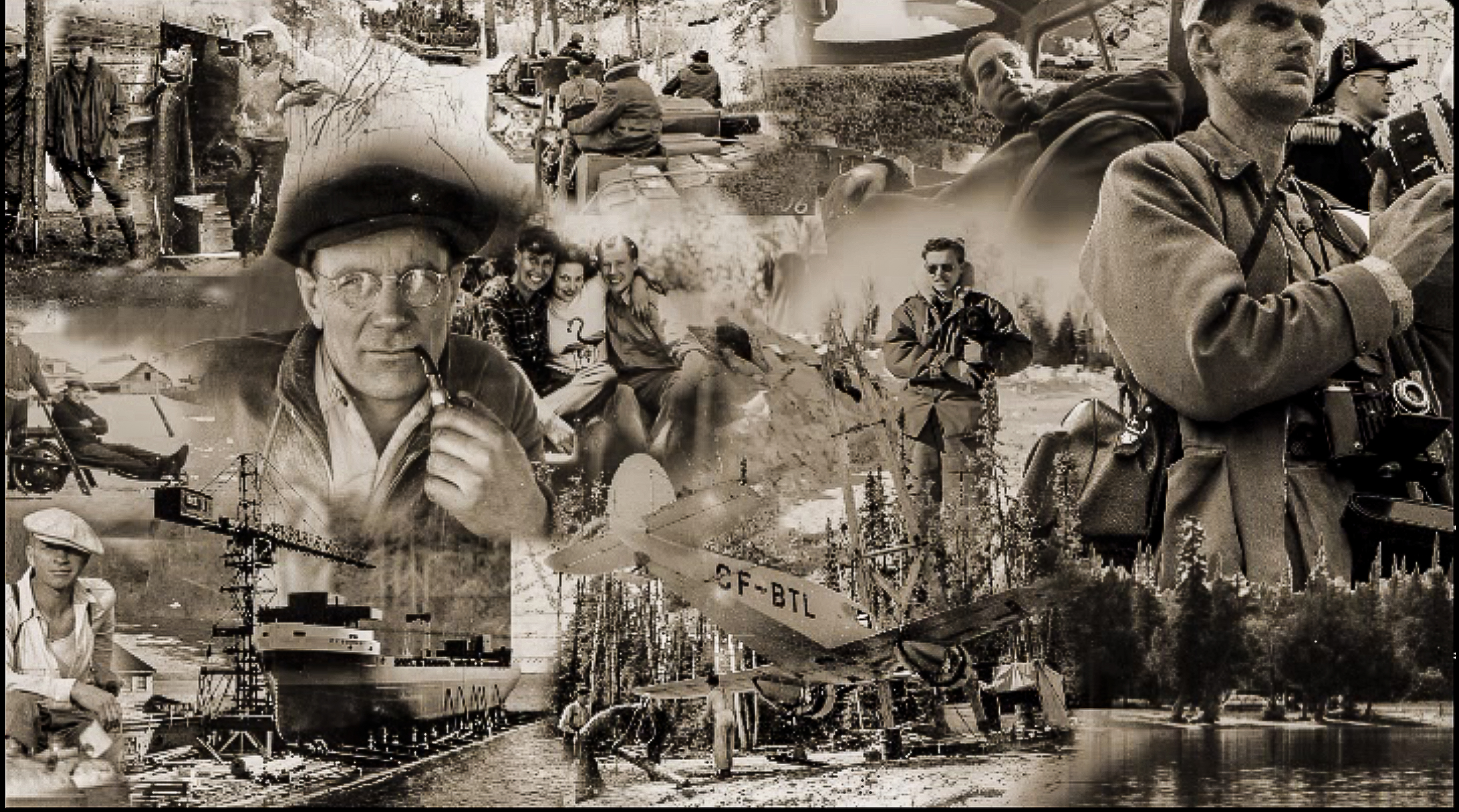| Marathon & District Historical Society and Museum |

Arthur's Landing, now Port Arthur. There were few habitations and no ports. The Hudson's Bay Company's post at the Pic persisted at least till 1865, but how much longer its post, or at least a post, lasted there is problematical. When William Van Horne actually began the Herculean task of building the Canadian Pacific Railroad along the north shore west from Heron Bay, it was necessary to have a dock, to which rails, ties, other supplies, men and provisions could be taken. Peninsula Harbor, because of its great depth and protection from winds was chosen. Remains of the Pier could still be seen when present operations at Marathon were begun. To this pier came the well remembered vessels of many Great Lakes lines, both sailing vessels and steamboats - the Ontario, Ocean, Argyle, Prussia, Kinkadin, E. M. Foster, and many stragglers carrying lumber for bridges and trestles, and rails. Then there were Smith and Mitchell's meat vessels, The Butcher Maid and The Butcher Boy. Captain Nicholson was master of one of them and remembers well how the cattle and other meat on the hoof were carried by vessel to Peninsula, as the C.P.R.'s main camp on the picturesque bay of the same name came to be called. Here the cattle were driven from camp to camp as required. Slaughtering was done at the destination of the individual animal, and carcasses were wrapped in cheesecloth and hung up on neighboring trees till required. Captain Nicholson also recalls how the natives were always passing to and fro, mainly between Port Arthur and Peninsula. Three gangs, it was commonly reported, were required on the railroad job, "one coming, one going, and one on the job. Besides the dock there was a warehouse, and soon a railroad station went up at Peninsula. Houses sprang up among the hosts of tents where the business part of Marathon now is. A hotel was erected. A photograph of this motley village of about the year 1885 is still in existence. Twelve thousand men and 1500 horses were employed in constructing "two hundred miles of engineering impossibilities. " as William Van Horne; its indomitable Yankee builder termed his Herculean task. Van Home chanced to be in Ottawa on a seemingly fruitless task of trying to bolster the dying credit of his undertaking, when the second Riel rebellion began in 1885. He was clever enough to see his chance to get public support of his railroad building. It had taken from March to August of I87O to ferry troops from eastern Canada to Prince Arthur's Landing and Winnipeg in the first Riel Rebellion. Van Home offered to move them this time in eleven days from Ottawa to Fort Qu'Apelle, on two days notice. His offer was accepted. Then the little Peninsula witnessed an odd sight. Soldiers were brought to the end of the rails in mid-winter weather on Lake Superior. The official report comments: "About 400 miles between the west end of the track and Red Rock or Nipigon - 66 miles from Port Arthur - had to be passed by a constantly varying process of embarking and disembarking guns and stores from flat cars to country team sleighs, and vice-versa. There were 16 operations of this kind in cold weather and deep snow. On starting from the west end of the track on the night of 30th of march the roads were found so bad that it took the guns 17 hours to do the distance (30 miles) to Magpie Camp. On from there to the east end of the track by team sleighs and marching 23 miles further on; on flat cars (uncovered and open) 80 miles, with thermometer at 50 degrees below zero. Heron Harbor, Port Munro, McKeller's Bay, Jackfish, McKay's Harbor were passed by alternate flat cars on construction tracks and in teaming in fearful weather round the north shore of Lake Superior. Nipigon or Red Rock was reached on the evening of 3rd April. The men had had no sleep for four nights." The C.P. R. construction camps, however, had supplied them with copious draughts of coffee and hot food. Van Horne fulfilled his promise and got the money he needed. In the end it took twelve million dollars to build the two hundred miles of difficult North Shore track. Gradually fill-ins replaced the long timbered trestles that were required in so many places over otherwise impossible terrain. Building came -to an end. Transcontinental trains sped past little Peninsula - and few passengers then or now dreamed of the drama that the high promontory, the Peninsula proper, had witnessed so recently. Gradually all traces of the railroad town died away. Only a small railroad station - one of two of the original stations still extant - a water tower, a post office, and a very few houses remained. Just before World War I the place was examined as a possible coaling station, but the idea was given up in favor of Jackfish. After the war a black granite quarry was opened, but it closed down during the depression. Finally, during World War II, the present building program of the Marathon Corporation was begun and almost overnight the busy construction scenes of 1885 were reenacted. This time, however, there will be no reversion to the wilderness in a few years’ time. For more information contact: marathonmuseum@gmail.com
|
